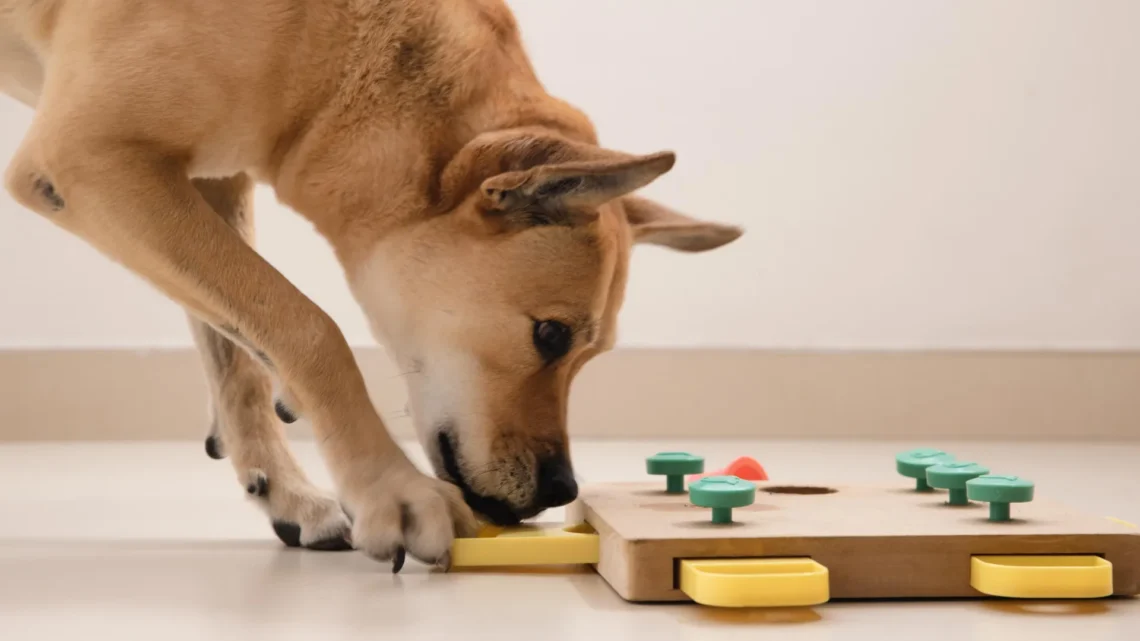As infants, humans naturally pick up new words and their meanings—like knowing that forks and bowls are related because both help us eat. A recent study published in the journal Current Biology on September 18 reveals that dogs can do something similar. A team of animal behavior specialists found that a group of Gifted Word Learner (GWL) dogs could categorize toys by their functions, such as tugging or fetching, even when the toys looked completely different. Remarkably, these dogs remembered their categorizations for a long time, all without any prior training.
“Our research shows that these Gifted Word Learner dogs can apply labels to items based on their function and usage,” explains Claudia Fugazza from Eötvös Loránd University in Budapest, Hungary. She likens it to a person who refers to both a traditional hammer and a rock by the same name.
“While a rock and a hammer look distinct, they serve the same purpose,” she points out. “Now we know that these dogs can do the same.”
The studies were conducted in the dogs’ own homes with their human companions. Initially, the dogs familiarized themselves with verbal labels for two groups of toys: those for pulling and those for fetching. Their owners consistently used these labels while playing, even though the toys had no similar features.
Next, the dogs were tested to see if they could connect the verbal labels to the correct toy groups before they encountered new toys in these two categories. This time, their owners didn’t use the terms “pull” or “fetch.”
The researchers discovered that the dogs could transfer the functional labels they learned to the new toys based on their experiences. In the final test, the dogs applied the verbal labels correctly by pulling or fetching the toys, even though their owners hadn’t named them.
“For these new toys, they hadn’t heard the names, but they had played either pull or fetch, so the dog had to choose which toy corresponded to which game,” says Fugazza. “This was all done in a natural setting with no rigorous training—just owners playing with the toys for a week. It’s a genuine interaction.”
The researchers concluded that dogs’ ability to associate verbal labels with objects based on function, rather than physical traits, indicates that they create a mental representation of objects based on their functional experiences, which they can recall later. These findings shed light on the evolution of basic language skills and their relationship to other cognitive abilities, such as memory.
Further research is needed to explore the limits and versatility of dogs’ language categorization abilities. The team suggests future studies may examine whether dogs that don’t learn object labels can still classify objects based on their functions.
“We’ve shown that dogs learn object labels incredibly quickly and can remember them for long periods without much practice,” Fugazza shares. “The way they extend labels beyond physical similarities shows the range of what these labels could mean for dogs.”
This research was supported by the National Brain Research Program NAP 3.0 of the Hungarian Academy of Sciences, the MTA-ELTE Comparative Ethology Research Group, and TRIXIE.
Summary: A study in Current Biology reveals that dogs, like infants, can categorize objects by their functions rather than by their physical appearance. Gifted Word Learner dogs demonstrated the ability to associate verbal labels with toys used for pulling and fetching, even after minimal training. This research highlights the cognitive abilities of dogs, suggesting they can form mental associations based on experience and memory.





